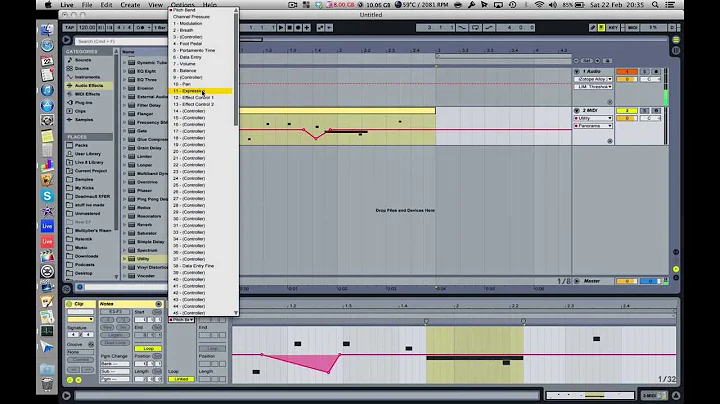Fixing AutoCAD Selection and Command Issues: Simple Solutions & Variables
Table of Contents
- Introduction
- Issue with selecting and starting commands
- Fixing the variable for selecting objects first
- Common question: Dialog boxes not popping up
- Turning dialog boxes back on
- Getting rid of or changing image borders
- Understanding the "image frame" variable
- Removing the border around PDFs
- Changing the "PDF frame" variable
- Conclusion
How to Fix Selection and Command Issues in AutoCAD
AutoCAD, the popular computer-aided design software, is widely used by professionals in various industries. However, like any complex software, it can sometimes encounter issues that affect its functionality. One common problem users face is when they are unable to select objects and start commands smoothly. In this article, we will address this issue and discuss how to fix it, as well as other related variables within AutoCAD that can save you time and headaches. So let's jump right in!
Issue with Selecting and Starting Commands
Have you ever experienced a situation where you select multiple objects in AutoCAD but are unable to perform commands on them immediately? For example, after selecting a group of objects, you try to erase them by hitting the "E" key, but nothing happens. Instead, you have to select the objects again to execute the command. This can be frustrating and time-consuming, especially when you're used to performing actions in a specific order.
The reason behind this issue is that a variable within AutoCAD has been set incorrectly or changed. This variable determines whether you can select objects first and then start a command. Fortunately, there is a simple fix for this problem. To resolve it, follow the steps below:
- Type "PICKFIRST" in the command line.
- Hit the Enter key.
- You will see that the variable is highlighted as the first selection.
- Make sure the value of this variable is set to "1" (which allows selecting objects first).
- Hit Enter to save the changes.
By modifying the "PICKFIRST" variable, you can ensure that you can select objects first and then execute the desired command without any interruptions. This simple adjustment can save you a significant amount of time and streamline your workflow.
Pros:
- Allows selecting multiple objects and performing commands seamlessly.
- Saves time by eliminating the need to reselect objects for each command.
Cons:
- May require manual adjustment if the variable changes unexpectedly.
Common Question: Dialog Boxes Not Popping Up
Another common issue that AutoCAD users often encounter is the disappearance of dialog boxes when performing certain actions, such as saving a file or opening a drawing. Instead of the familiar dialog box, commands are executed through the command line or text prompt, which can be inconvenient for users accustomed to the visual interface of dialog boxes.
If you are facing this problem, don't worry! There is a simple solution to restore the dialog boxes in AutoCAD. Follow these steps:
- Type "FILEDIA" in the command line.
- Hit the Enter key.
- Change the value of this variable to "1" to enable the dialog boxes.
- Hit Enter to save the changes.
Once you have made this adjustment, the dialog boxes for actions like opening and saving files will reappear, allowing you to work more efficiently. Now, let's move on to another common issue related to image borders.
Pros:
- Restores the familiar visual interface of dialog boxes.
- Enables a more user-friendly workflow.
Cons:
- May require manual adjustment if the variable changes unexpectedly.
Getting Rid of or Changing Image Borders
When working with images in AutoCAD, you might come across situations where the image borders or frames interfere with your desired output. This can be especially problematic when printing or plotting your drawings. Fortunately, AutoCAD provides a variable that allows you to control the display and plotting of borders around images, objects, and PDFs.
To manipulate image borders, follow these steps:
- Type "IMAGEFRAME" in the command line.
- Hit the Enter key.
- You will be presented with three options: "0," "1," and "2."
- "0" turns off the frame entirely.
- "1" shows and plots the frame.
- "2" shows the frame but does not plot it.
Depending on your specific requirements, choose the option that best suits your needs. For example, if you want to remove the image borders completely, set the "IMAGEFRAME" variable to "0." This will ensure that when you print or plot your drawings, the borders around the images will not be visible.
It is important to note that the "IMAGEFRAME" variable also applies to PDF files inserted into AutoCAD drawings. By adjusting this variable, you can control the display and printing of borders around PDFs as well.
Pros:
- Provides control over the display and plotting of image borders.
- Allows for a cleaner and more professional appearance of drawings.
Cons:
- May require manual adjustment for each image or PDF file.
- Different settings may be needed for different scenarios.
Conclusion
In this article, we have discussed some common issues that AutoCAD users encounter and the corresponding variables that can alleviate these problems. By adjusting the "PICKFIRST" variable, you can ensure a smooth workflow by allowing the selection of objects before executing commands. Furthermore, the "FILEDIA" variable enables the restoration of dialog boxes, improving user experience and productivity.
Additionally, we explored the "IMAGEFRAME" variable, which controls the display and plotting of borders around images and PDFs. By understanding and manipulating this variable, you can achieve cleaner and more professional-looking drawings.
Remember, while these variables can significantly enhance your AutoCAD experience, it is essential to back up and save your profile settings regularly. This will prevent any unexpected changes or loss of customization.
We hope that this article has provided helpful insights and solutions to the issues you may have encountered in AutoCAD. Implementing these fixes will not only save you time and headaches but also enhance your overall productivity. Happy CADing!
Highlights:
- Fixing selection and command issues in AutoCAD
- Restoring dialog boxes for a more user-friendly interface
- Controlling image borders and achieving cleaner drawings
FAQ
Q: How can I fix the issue of not being able to select objects and start commands in AutoCAD?
A: To fix this issue, you need to modify the "PICKFIRST" variable. Type "PICKFIRST" in the command line, hit Enter, and change the value to "1" to allow selecting objects before executing commands.
Q: I can't see the dialog boxes in AutoCAD. How can I get them back?
A: You can restore the dialog boxes by adjusting the "FILEDIA" variable. Type "FILEDIA" in the command line, hit Enter, and set the value to "1" to enable the dialog boxes.
Q: How can I remove the borders around images and PDFs in AutoCAD?
A: The "IMAGEFRAME" variable allows you to control the display and plotting of borders around images and PDFs. Type "IMAGEFRAME" in the command line, hit Enter, and choose the desired option (0, 1, or 2) to remove or change the borders as per your needs.







